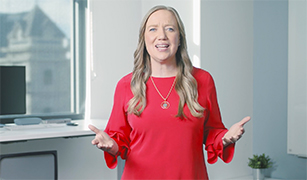Dear Crucial Skills,
I have taken your course, but I’ve hit a wall. A coworker comes into my office, closes the door and starts talking about her husband, cat, children, etc. How do I tell her I don’t want to discuss this with her?
Signed,
Friend of a Chatty Cathy
Dear Friend,
It can be tricky to find the right balance between sharing and oversharing at work. I have a few thoughts regarding how to move forward in this situation.
The reason you’re hesitating to simply set a boundary with your coworker around how much she shares with you is because you know it has potential to hurt her feelings. But the promise of Crucial Conversations is that you can deliver tough news in a respectful way.
Here are a few skills that can help in the Crucial Conversation.
Start with Heart
When beginning a Crucial Conversation, get your intention right before opening your mouth. Clearly examine your reasons for not wanting to hear about your coworker’s personal life. Starting with heart ensures you understand your intent. And when you understand your intent, you can better communicate your intent. Starting with heart also pushes you to find a respectful intention beyond desires to rid yourself of irritation.
Perhaps your intent is to express that her interruptions disrupt your focus, your workload is demanding, or you simply don’t have the emotional bandwidth. Whatever the reason, consider how you can share it honestly and kindly so your coworker can better hear your request.
Master Your Emotions
The primary reason we do badly in Crucial Conversations is that by the time we open our mouths we’re irritated, angry, or disgusted with the other person’s actions. Then, no matter how much we try to fake it, our negative feelings creep into the conversation. So, before opening your mouth, open your mind. Try to separate people from the problem. Try to see your coworker as reasonable, rational, and decent—even if her actions frustrate you. It’s likely she is desperately looking for connection and not intentionally trying to disrupt your workflow. When you hold a generous thought about the other person, you will come across entirely differently. You will be able to calmly communicate your good intent rather than speak out of frustration and annoyance.
Help Others Feel Safe
Unskilled people believe that certain topics are destined to make other people defensive. Those who are skilled at Crucial Conversations realize people don’t become defensive until they feel unsafe. They become defensive less because of what you’re saying than because of why they think you’re saying it. But when others feel respected and trust your motives, they let their guard down and begin to listen—even if the topic is unpleasant.
Communicate Your Good Intent
Start the conversation by assuring her of your positive intentions and your respect for her. And finish by kindly drawing the boundary. Let me also pose a question for you to consider. Is there a happy medium? Is there a way to both hold a boundary as well as be more available to your coworker? Can you tell her that you enjoy talking with her but are not available for uninvited drive-by conversations in the middle of the day? Maybe you can spare 10 minutes every now and then when things are slow, or over a coffee break. Perhaps your colleague is seeking friendship and connection, and you could find a way to offer some, assuming it’s in a way that is more respectful of your time and attention.
I started by sharing the promise of Crucial Conversations—that tough news can be delivered in a respectful way. I’ll end with a caveat. Just consider that even though tough news is delivered respectfully, it doesn’t mean it isn’t hard to hear. It’s possible there will be no way to say something without your coworker taking some offense. But if you do your part to get your heart right, master your emotions, make her feel safe, and communicate your good intent, how she reacts is up to her. Her response is not your responsibility. Your responsibility is to be both candid and respectful, always.
Best of luck,
Brittney











Good insights and helpful suggestions, Brittney. Thanks!
Well done and helpful!